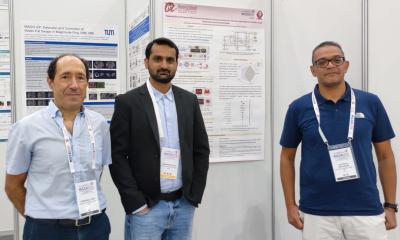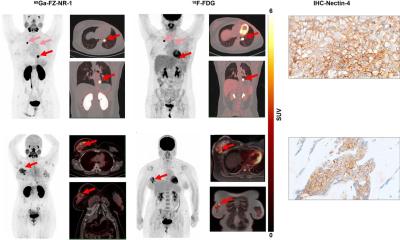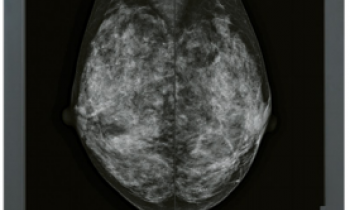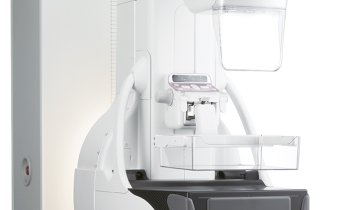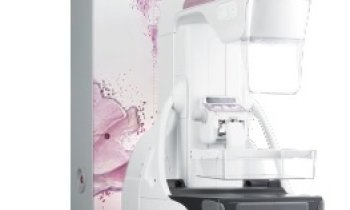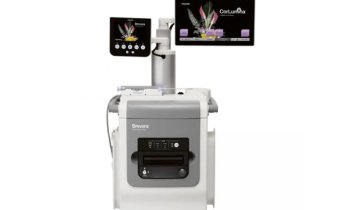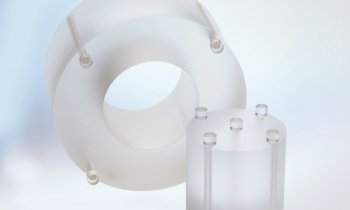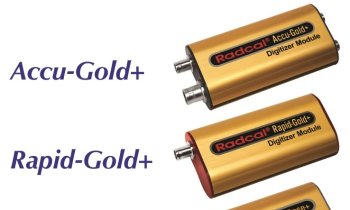Making the best out of digital mammography with contrast-enhancement
Standard mammography is the most relevant diagnostic tool to address breast cancer: It shows excellent image quality, a smooth workflow, high connectivity and a very good clinical outcome in terms of sensitivity and specificity. However, there are certain shortcomings to it, especially in dense breast tissue. Over the last 12 years, technical and clinical research is done with contrast-enhanced spectral mammography (CESM) in several scientific centres in Europe and North America to reduce ambiguity in the diagnosis of breast carcinoma with the help of contrast agents.
Leading this role – like in mammography technique at all – is France with the Institut de Cancérologie Gustave Roussy (IGR) in Villejuif. The French government invested into two big R&D projects for CESM from 2002 until 2005. The development of CESM was developed in close cooperation between science institutes, hospitals, and industry. Former IGR Medical Director Prof. Robert Sigal and his team conducted the first study using CESM in 1998. Today, Prof. Robert Sigal is President of GE Healthcare in France, the company which launched the first commercially available CESM-technology on a mammography system this summer.
In an interview with EUROPEAN HOSPITAL Prof. Sigal explained how the technique works: “We utilize the fact that tumor evolution affiliates with abnormal vessel growth. The sprouting angiogenesis can be made visible by the contrast agent. For that, firstly contrast agent s injected intravenously, then, two image acquisitions are performed with two different energy levels: one of the tissue and one of the contrast enhancement. The exam only takes 5-10 minutes. The two acquisitions are automatically processed to provide a standard view plus a second image which highlights the region where the contrast agent is present. The two images are viewed together at the workstation The whole secret lays in the fast switching of energy level algorithms and a patented data recombination algorithm to extract the iodine information: It allows for visualization of the blood vessel information together with the usual breast tissue structure images side by side.” But what about inflammatory areas? “It is true that these iodine contrast agents are non-specific. However, pre-treated breast carcinoma in most cases shows no forms of inflammation. And keep in mind that this is angio-technique with a highly negative predicitive value: If there is no contrast enhancement at all, cancer in most cases can be excluded.”
In the first clinical trials, it showed that CESM significantly improves the accuracy of breast exam in sensitivity (for every 100 cancers potentially find 13 more) as well as in specificity (6 more benign lesions out of 100 can be correctly classified). Now is the time for CESM to prove its value in long-term clinical routine and find its position in a row with the established image modalities. Because CESM might be so beneficial in dense breast it is directly competing with ultrasound as an additional tool to standard mammography in suspicious cases. “It can be performed after ultrasound to increase diagnostic confidence, or even before ultrasound, because it is possible to carry out the exam almost immediately after a standard mammography exam on the same device. CESM can be implemented as a technical upgrade to GE’s digital mammography equipment.” Nevertheless CESM in comparison to ultrasound means dose exposure, but at least the overall increase of dose is less than 20 %.
There are other applications for CESM which are currently being evaluated, reveals Prof. Sigal, for instance in follow-up of patients: “One of the questions here is in how far it can compete with MR after breast cancer treatment, especially in view of MR being less available and more expensive. In addition, the reading of MR images requires a lot of training and experience. CESM is a very straight-forward technique which makes breast lesions visible even for non-professionals. But study results in this field are not available yet.”
Text: Karoline Laarmann
26.08.2010



